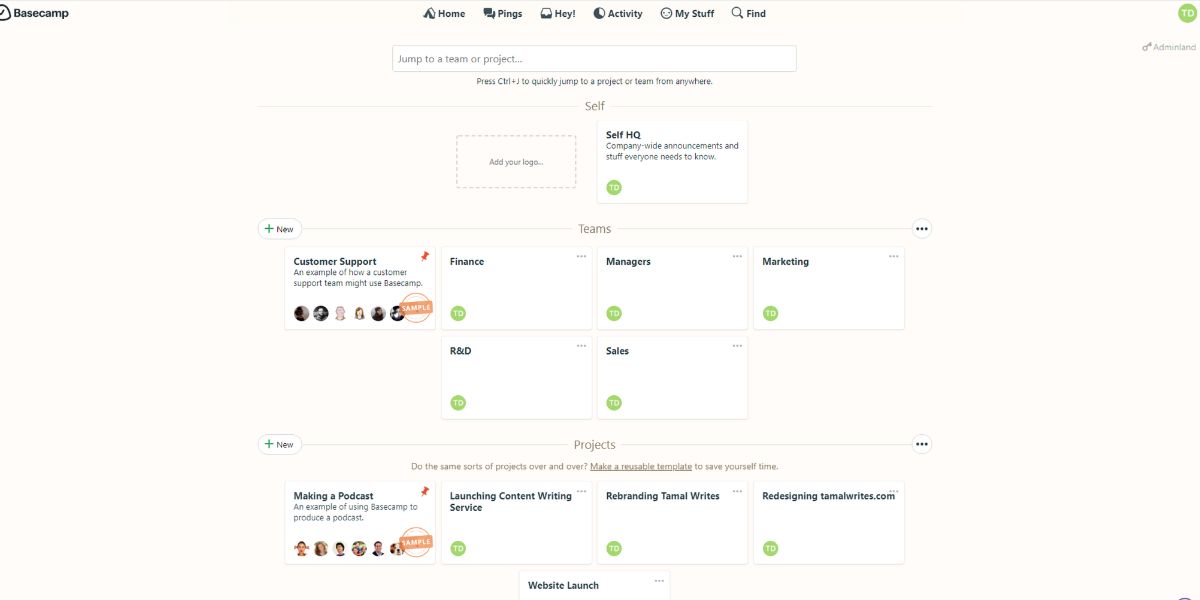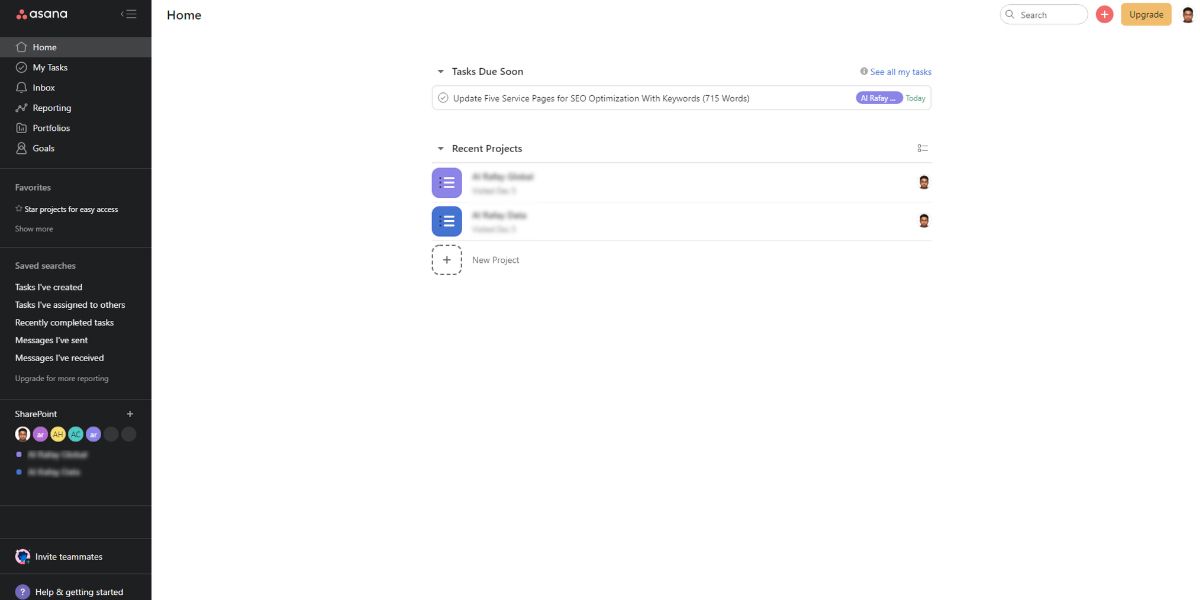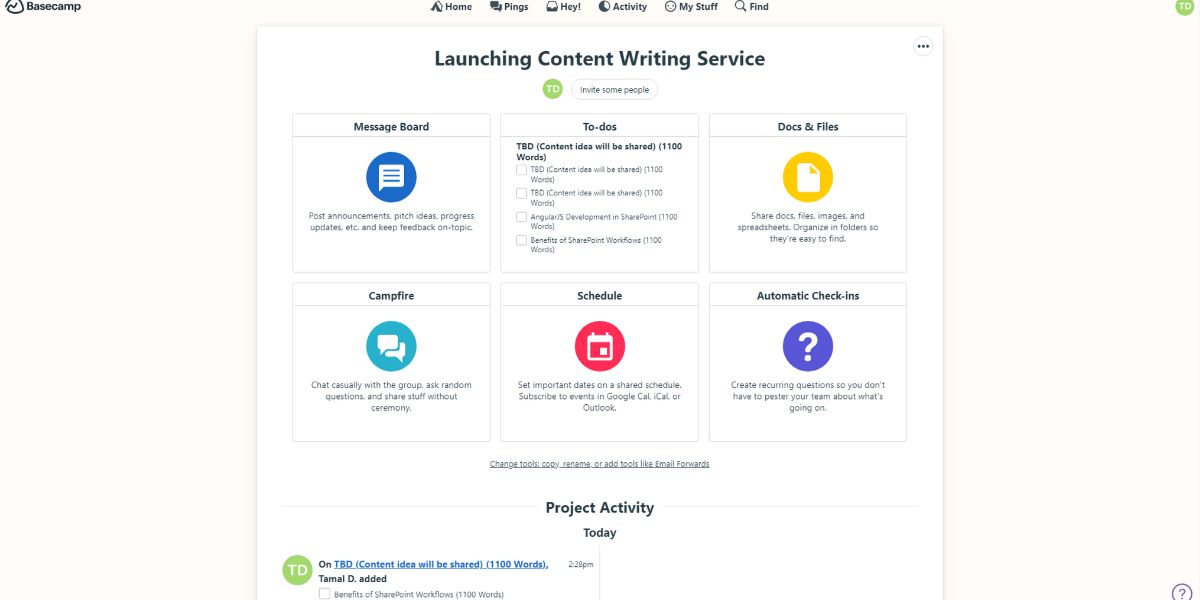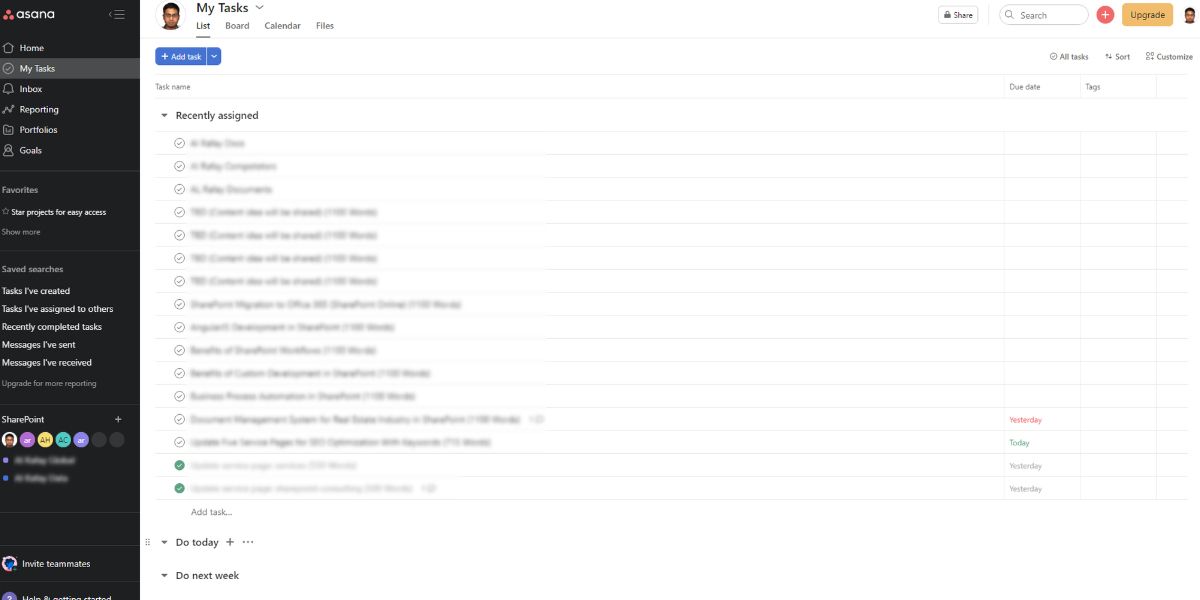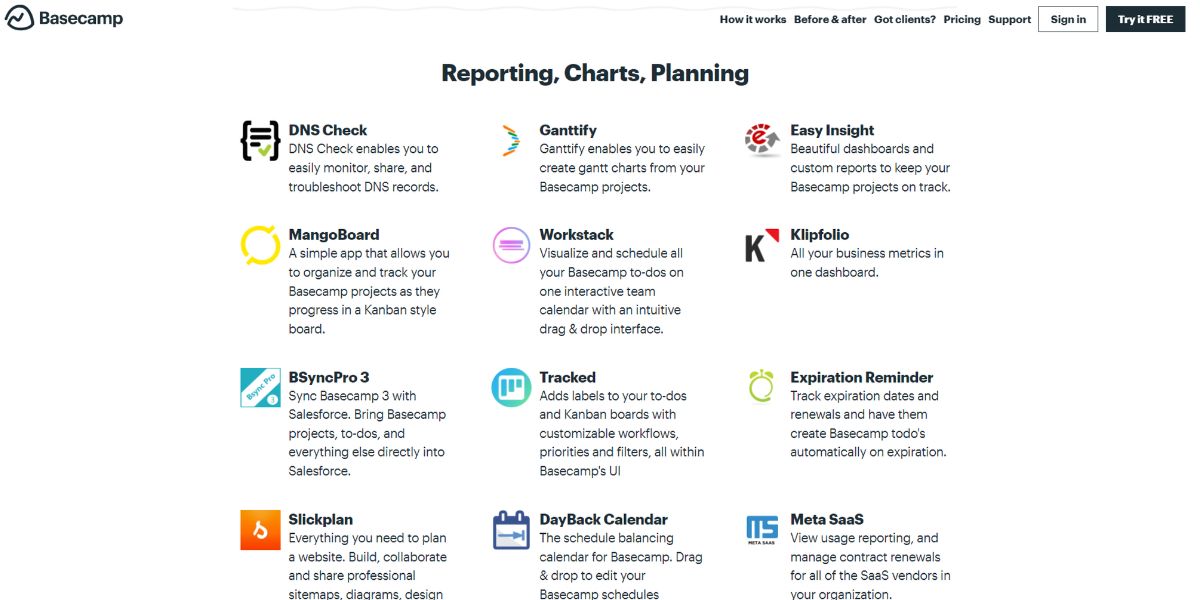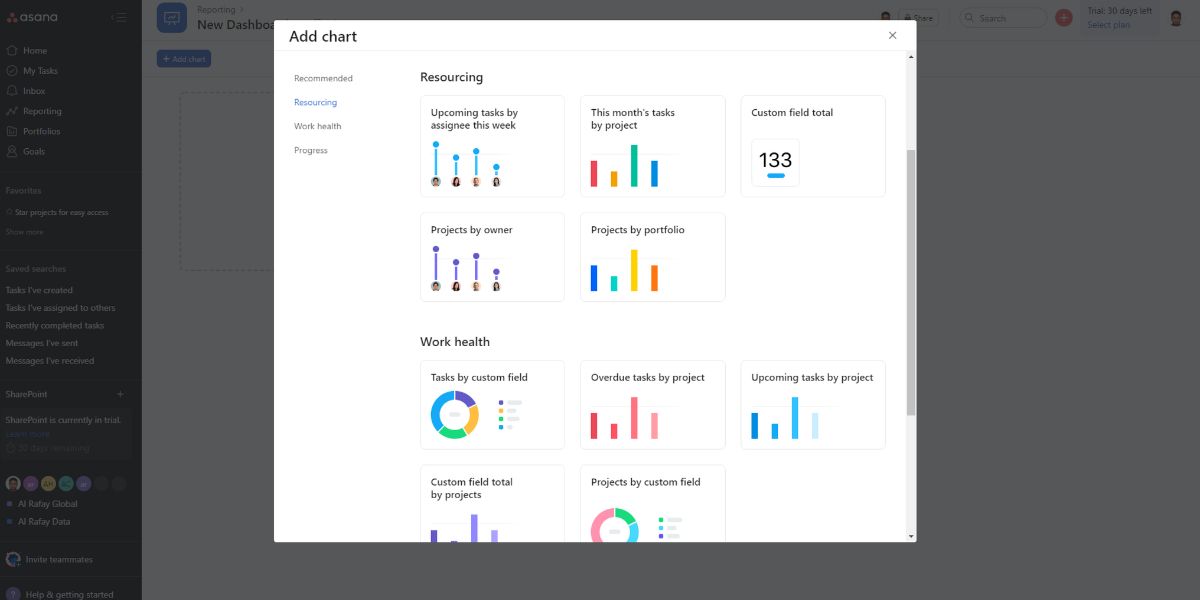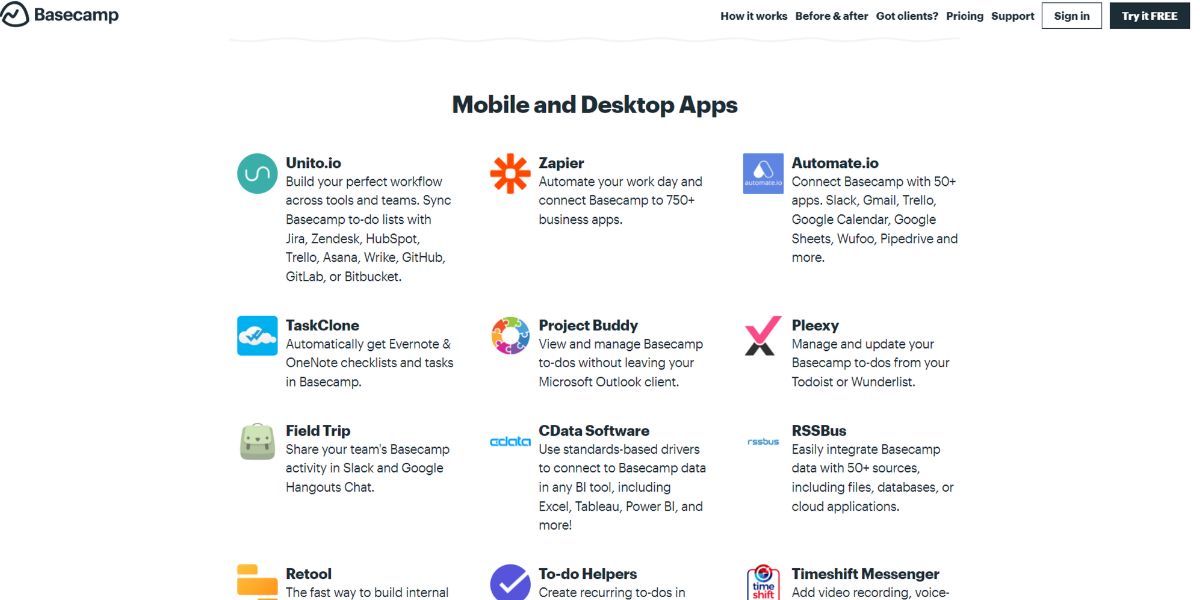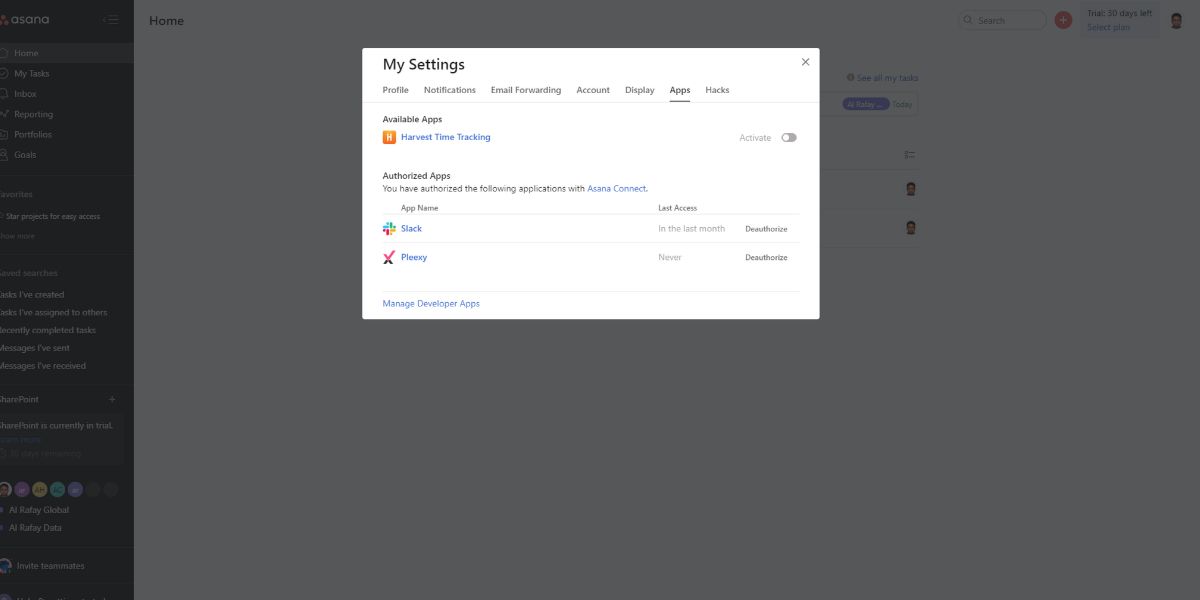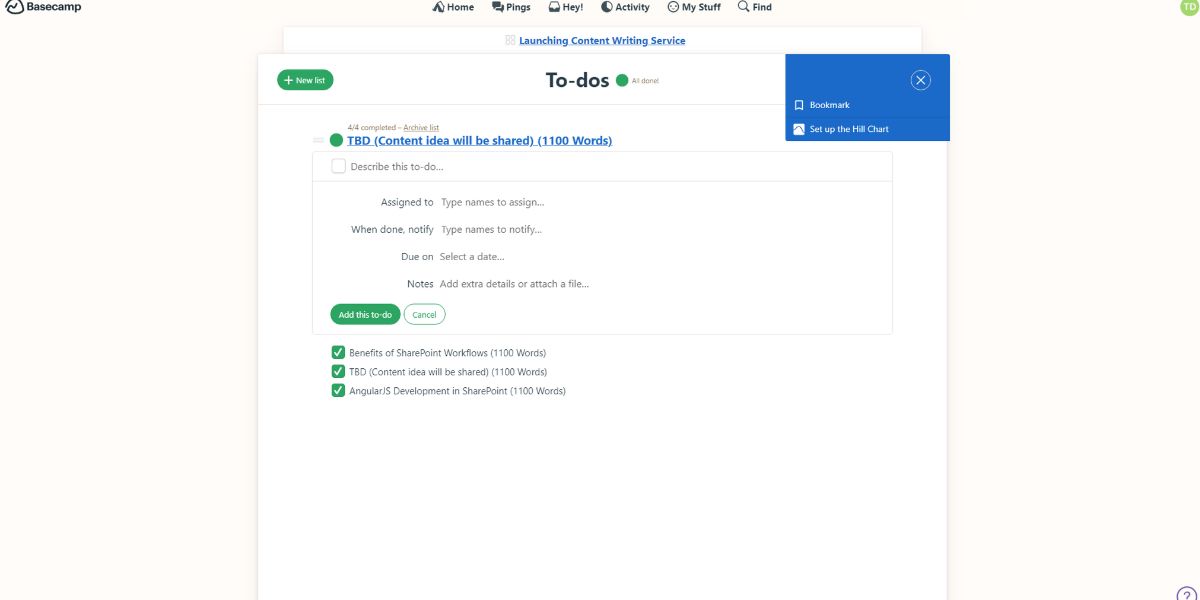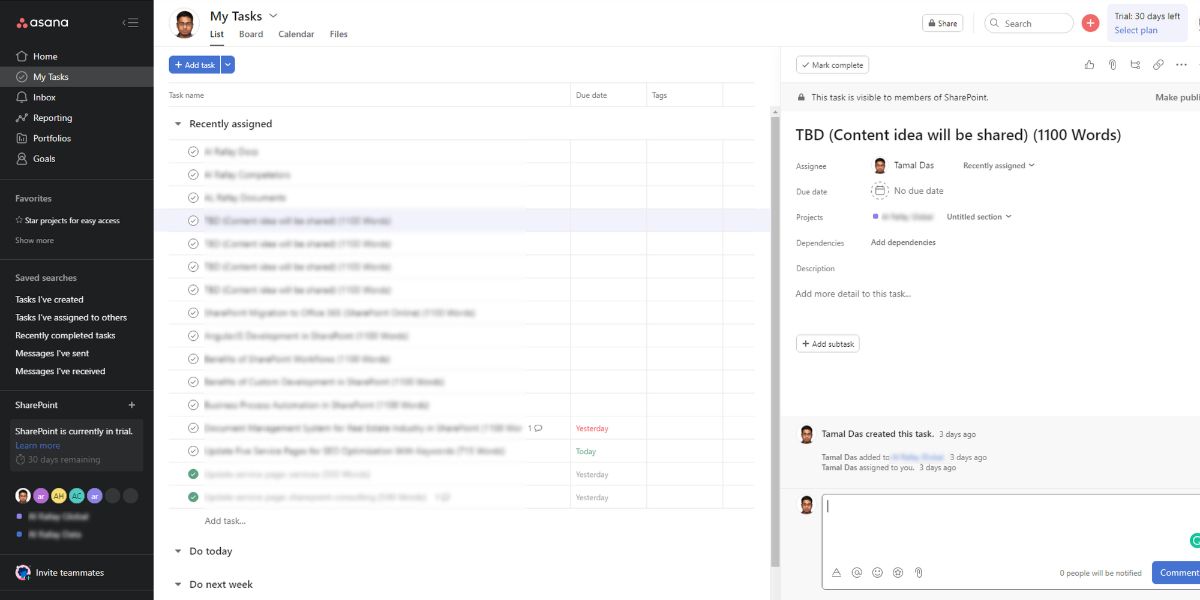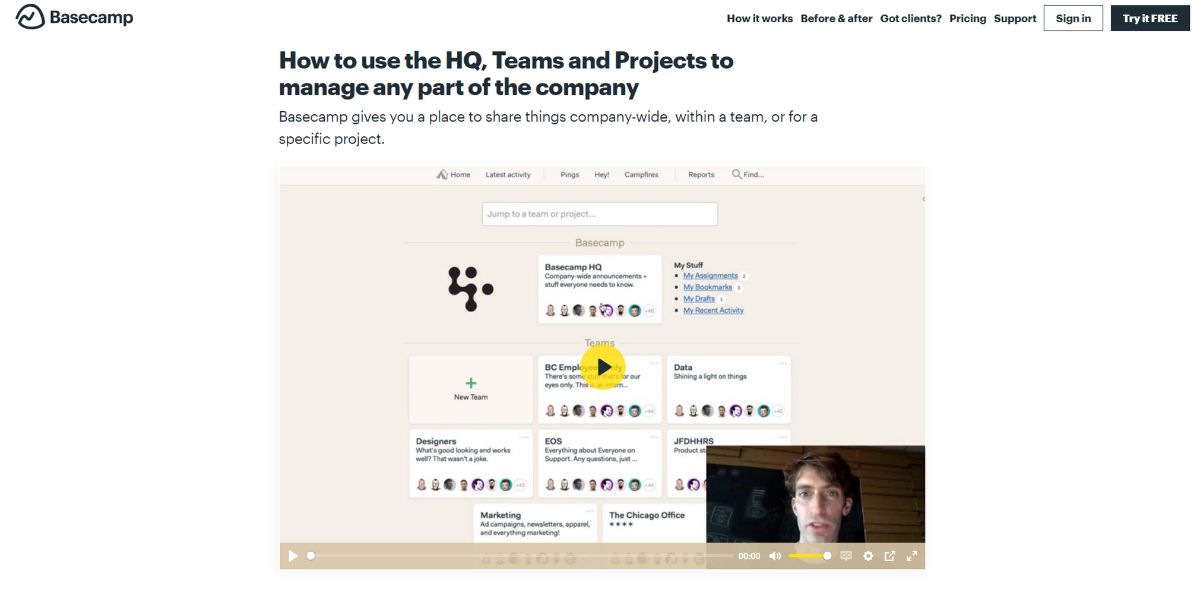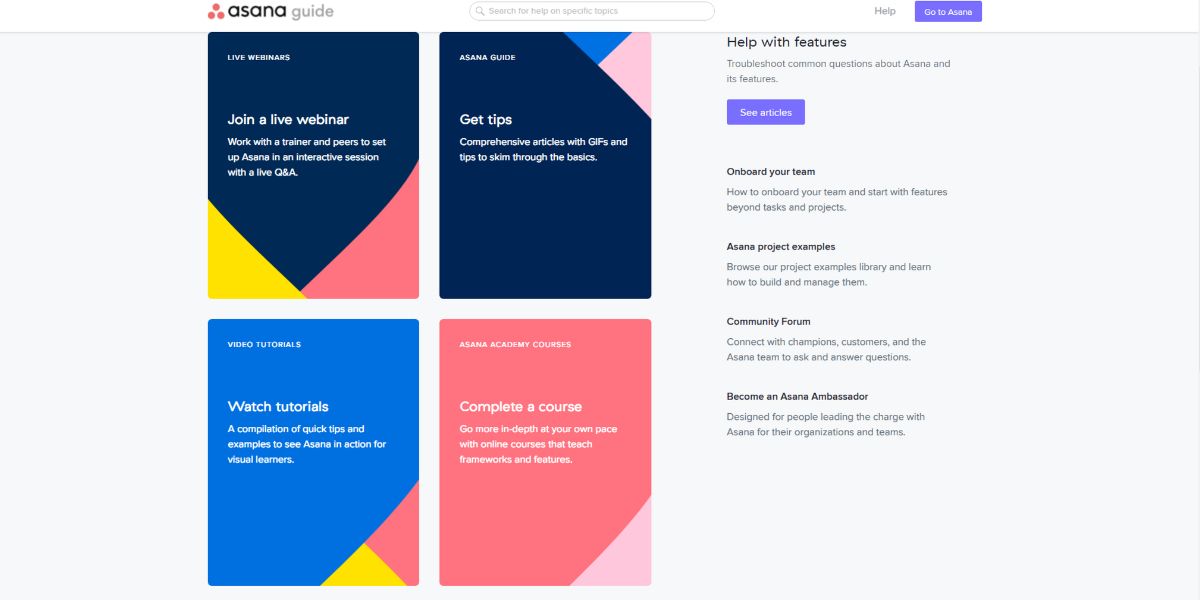With project management tools, you can collaborate with your teammates and manage all the tasks from one place. If you’re trying to find a suitable tool for your project, you must have come across Asana or Basecamp. Both are popular platforms for project management.
In this article, we'll show you a comparison of these two project management apps and how they compare.
1. User Interface
Basecamp dashboard shows all the teams and projects you are a part of and contains its menu on the top bar. Click on a project to find its Message Board, To-Dos, Docs & Files, Campfire, Schedule, and Automatic Check-ins.
You can choose between the card and list view to display these items. However, you can't view tasks in the Gantt timeline or Kanban format in Basecamp.
On the contrary, the user interface of Asana is rather traditional. On the left, it has a navigation menu. The detailed tasks are visible in the rest of the window. You can even shrink the navigation menu and fullscreen the dashboard.
Asana lets you view your tasks in different formats like timeline, list, and calendar view. Viewing tasks of each project separately is also possible. Here you can see, the Asana interface is perfect for both basic and advanced users. But, Basecamp does not offer a variety of viewing styles for high-level users.
2. Task Management
Basecamp facilitates project tracking and completion effortlessly. This tool lets you collaborate on tasks. You can use the campfire section as the project forum to discuss and announce crucial topics. The Schedule tool of Basecamp is a great way to keep track of all the milestones and deadlines.
Since Asana focuses on team collaboration and project management, you can schedule and track tasks easily with this tool. If you’re a fan of visual task management, you can view tasks through a shared team calendar and Gantt timeline.
It also has the Workload management tool that lets you track and manage the workload of every team member. With Basecamp, you can’t manage task dependencies or set permissions for team members. However, both of these features are available in Asana.
3. Reporting
Basecamp doesn’t offer any features regarding reporting and analytics. Hence, it’s not possible to generate a report on any aspect of your project with this platform. If needed, you can use integrated apps to generate reports from your Basecamp project data.
On the flip side, Asana comes with the Universal Reporting feature. This feature can transform raw numeric data of your project into charts and graphs. Using Asana reporting, anyone can create graphical data visualizations without much difficulty.
Create a new dashboard by navigating to the Reporting section of the left panel of Asana. You can customize the report with visual graphs and charts of your choice. Sharing these reports with internal and external stakeholders is also easy.
If creating a report is an integral part of your projects, choosing Asana would be a better choice.
4. Time-Tracking
If you’re managing projects for a third-party client, time-tracking and billing are two mandatory features your project management app should have. Unfortunately, neither Basecamp nor Asana offers any time tracking option.
No matter which platform you choose between these, you need to integrate an additional tool for time-tracking.
5. Integration
Basecamp supports integration with more than 70 tools and apps. The tools include Zapier, Pleexy, Harvest, Everhour, Clockify, Timely, Meta SaaS, GanttWork, ScrumDo, Proposify, PMS Data Migration, Akita, Honeybadger, Git Helpers, Toggl, DNS Check, and Ziflow.
On the other hand, Asana offers integration with more than 220 tools. The list includes Microsoft Teams, Adobe Creative Cloud, Tableau, Microsoft Office 365, Gmail, Google calendar, Power BI, Salesforce, Canva, Figma, Lucidchart, YouTube, InVision, and so on.
Asana is undoubtedly better than Basecamp in terms of integration support.
6. Pricing
Both Asana and Basecamp come with straightforward pricing models. Basecamp offers a free plan named Basecamp Personal, ideal for students, freelancers, or personal projects.
If you want to upgrade the limited features of this plan, it’ll cost you $99/month to use Basecamp Business. You can use this paid plan for organizations with any number of teammates.
The free plan of Asana is known as Asana Basics that anyone can use for project management. Asana has two paid plans: Premium and Business. These plans will cost you $10.99 and $24.99 per user/month, respectively.
If you want to get a premium plan of project management app for a large company, Basecamp will be cost-effective. But, for constantly scalable teams, Asana’s pay-as-you-go packages will be better.
7. Ease of Use
As a collaborative platform, Basecamp has some fundamental functions like creating tasks, stacking communications, storing files that you can perform seamlessly. However, you may find some of its tools challenging to use, such as budgeting, billing, and reporting.
Even if you are using Asana for the first time, you should not have difficulty using it due to its zero learning curve. It has various options to sort and view your projects, but you can easily understand them and navigate through the tool.
Therefore, you may experience that using Asana is a bit easier than Basecamp.
8. Support
Basecamp's users have access to short video tutorials or live classes, which will help with tool basics and issue resolution. They can also check out other resources like FAQs and how-to guides. If none of these work, you may contact customer support.
Asana offers a comprehensive knowledge base for its users that contains FAQs regarding common issues like software troubleshooting, billing, and tool usage. Asana Premium users can access priority support, onboarding resources, and webinars, offered by the Customer Success Management team.
Basecamp provides a better support facility to its customers compared to Asana. Besides live classes, it offers customer support to all users, while only the paid plan users of Asana can get priority support.
Basecamp vs. Asana: Choose the Right Project Management Tool
From the thorough discussion of this article, you can understand that Asana has an advantage over Basecamp in terms of features, interface, and other options. Now that you know about both these tools inside out, you can find the right app for your team’s requirements.
Also, there are other project management platforms available in the market. You may want to compare those as well before opting for any tool.


